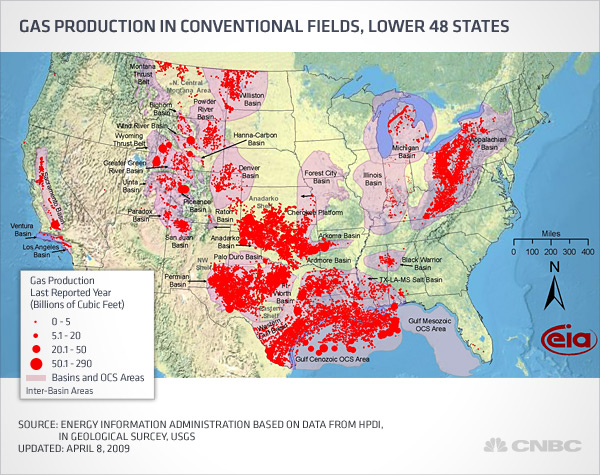GAO: Fracking is Overwhelming EPA, Has Many Unknown Risks
 GAO stands for Government Accountability Office. We bet you didn't think there was such a thing.
GAO stands for Government Accountability Office. We bet you didn't think there was such a thing.
The GAO is in business to issue reports on how government works and doesn't work. It's the audit and investigative arm of the Congress. Today comes news that the Office has issued two new reports on fracking – one on how federal regulators are coping with the new responsibility of overseeing so much new drilling in so many new places all at once, and one on the possible risks posed by fracking to the public health and the environment.
GAO says fracking is overwhelming the resources of the federal agencies assigned to watchdog the process and industry:
"Federal and state agencies reported several challenges in regulating oil and gas development from unconventional reservoirs. EPA officials reported that conducting inspection and enforcement activities and having limited legal authorities are challenges. For example, conducting inspection and enforcement activities is challenging due to limited information, such as data on groundwater quality prior to drilling. EPA officials also said that the exclusion of exploration and production waste from hazardous waste regulations under RCRA significantly limits EPA’s role in regulating these wastes. In addition, BLM and state officials reported that hiring and retaining staff and educating the public are challenges. For example, officials from several states and BLM said that retaining employees is difficult because qualified staff are frequently offered more money for private sector positions within the oil and gas industry."
And the GAO says there are a lot of unknown risks to fracking based on the evidence so far:
Oil and gas development, whether conventional or shale oil and gas, pose inherent environmental and public health risks, but the extent of these risks associated with shale oil and gas development is unknown, in part, because the studies GAO reviewed do not generally take into account the potential long-term, cumulative effects. For example, according to a number of studies and publications GAO reviewed, shale oil and gas development poses risks to air quality, generally as the result of (1) engine exhaust from increased truck traffic, (2) emissions from diesel-powered pumps used to power equipment, (3) gas that is flared (burned) or vented (released directly into the atmosphere) for operational reasons, and (4) unintentional emissions of pollutants from faulty equipment or impoundments–temporary storage areas. Similarly, a number of studies and publications GAO reviewed indicate that shale oil and gas development poses risks to water quality from contamination of surface water and groundwater as a result of erosion from ground disturbances, spills and releases of chemicals and other fluids, or underground migration of gases and chemicals. For example, tanks storing toxic chemicals or hoses and pipes used to convey wastes to the tanks could leak, or impoundments containing wastes could overflow as a result of extensive rainfall. According to the New York Department of Environmental Conservation's 2011 Supplemental Generic Environmental Impact Statement, spilled, leaked, or released chemicals or wastes could flow to a surface water body or infiltrate the ground, reaching and contaminating subsurface soils and aquifers. In addition, shale oil and gas development poses a risk to land resources and wildlife habitat as a result of constructing, operating, and maintaining the infrastructure necessary to develop oil and gas; using toxic chemicals; and injecting fluids underground. However, the extent of these risks is unknown. Further, the extent and severity of environmental and public health risks identified in the studies and publications GAO reviewed may vary significantly across shale basins and also within basins because of location- and process-specific factors, including the location and rate of development; geological characteristics, such as permeability, thickness, and porosity of the formations; climatic conditions; business practices; and regulatory and enforcement activities."
So now we have the Director of the US Centers for Disease Control's Environmental Health agency saying that, "We do not have enough information to say with certainty whether shale gas drilling poses a threat to public health," along with the GAO saying the extent of the risks posed by fracking to our air, water, and land are largely unknown. How many more red flags do you need?
